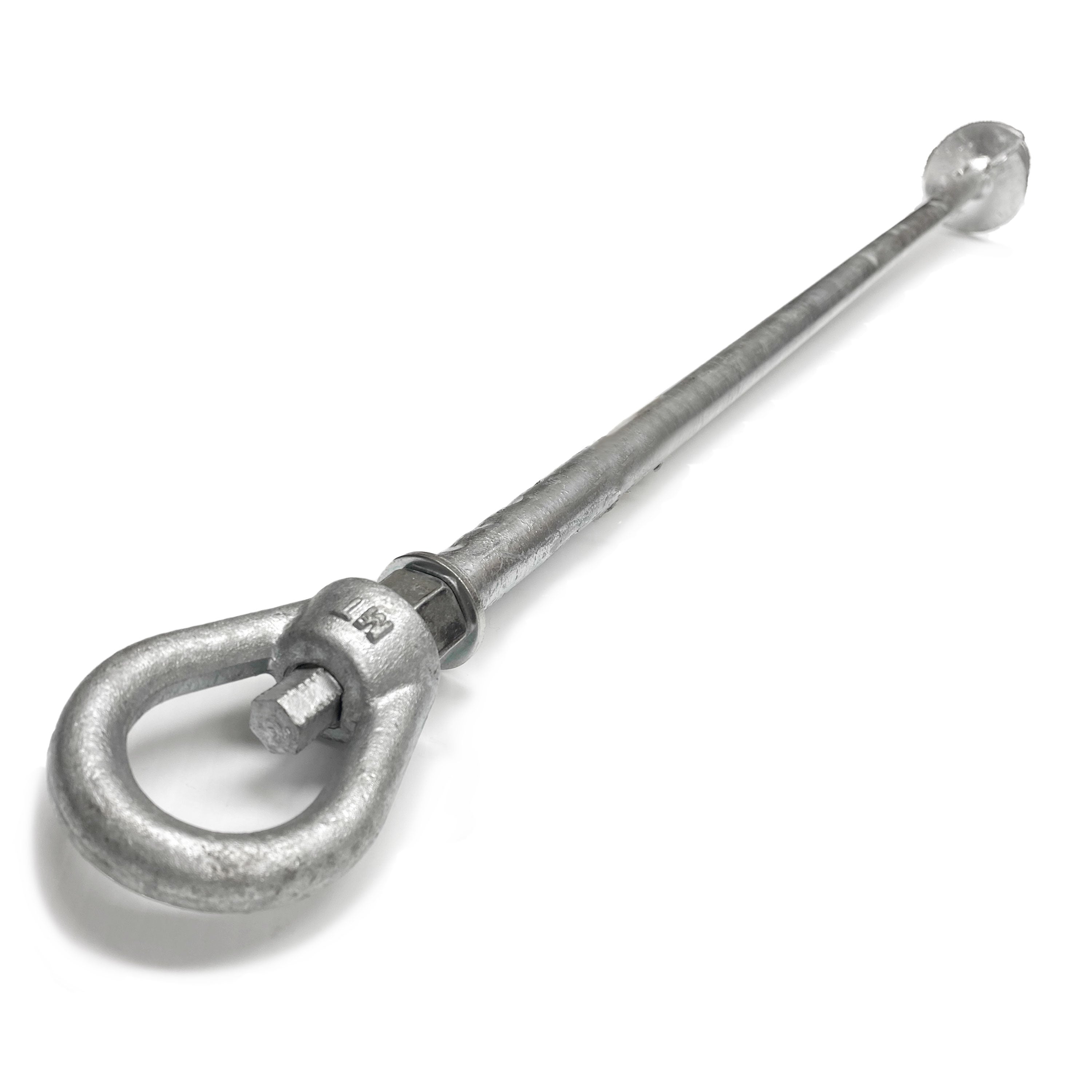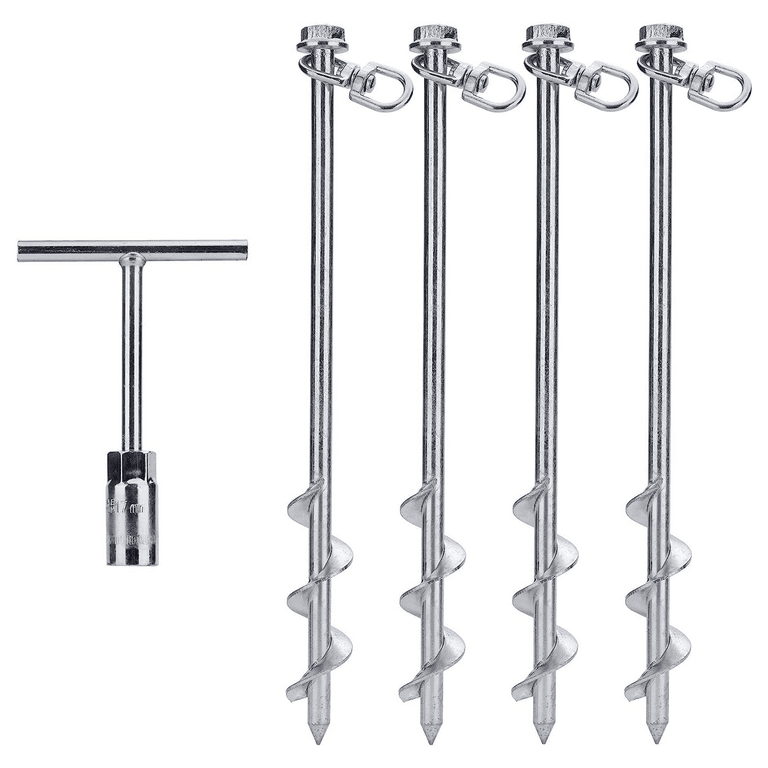Essential Aspects Before Getting a Heavy-Duty Ground Anchor
Essential Aspects Before Getting a Heavy-Duty Ground Anchor
Blog Article
Explore the Different Sorts Of Ground Anchor for Your Following Project
From auger anchors, which excel in varied soil conditions, to risk anchors created for temporary installments, the choices are various. Additionally, concrete and screw supports existing unique benefits in details scenarios, while deadman supports are tailored for applications calling for resistance to lateral forces.

Auger Anchors
Auger anchors are a prominent option in numerous building and landscape design tasks as a result of their one-of-a-kind style and reliable anchoring capacities. These supports consist of a helical screw-like shaft that is driven right into the ground, permitting a safe and steady hold. The spiral layout helps with simple setup and optimizes resistance versus lateral pressures, making auger anchors especially effective in applications such as fencing, momentary structures, and erosion control.
The installation process of auger supports is reasonably straightforward. Auger supports can be quickly removed and recycled, which adds to their cost-effectiveness and sustainability.
Among the considerable benefits of auger anchors is their capability to disperse loads equally throughout the surrounding dirt, minimizing the danger of dirt disturbance and decreasing ecological effect. In addition, they are less prone to loosening or heaving gradually compared to standard securing techniques. Subsequently, auger anchors are an outstanding option for tasks requiring reliable and durable anchoring options.

Stake Anchors
When it concerns securing frameworks in a range of outdoor applications, stake supports offer a straightforward and reputable option. These supports are usually created from long lasting products such as steel or aluminum, created to withstand ecological tensions while giving optimum stability. Their simple layout permits fast installment, making them an excellent option for momentary or irreversible anchoring demands.
Risk supports are especially useful in securing outdoors tents, covers, and other lightweight frameworks versus wind and weather. They operate by being driven into the ground at an angle, developing a solid hold that withstands pull-out pressures - Ground Anchor. The performance of risk supports depends on numerous variables, consisting of soil type, dampness web content, and the angle of installation
For included protection, many stake supports include add-on factors for ropes or straps, permitting tension modifications as essential. In applications such as landscaping or building and construction, they can efficiently support devices or structures on unequal surface. Overall, risk supports give a economical and functional solution for securing different outside installations, making them a recommended choice for contractors and DIY enthusiasts alike.
Concrete Anchors
Concrete supports provide a durable service for safeguarding frameworks to concrete surfaces, making sure security and safety in various applications. These supports are necessary for projects ranging from household constructions to large industrial installments. They are available in various types, including development anchors, sticky anchors, and undercut anchors, each created for particular tons requirements and ecological conditions.
Sticky supports use high-strength epoxy or material to bond the support to the concrete, offering premium load-bearing capacities, specifically in broken concrete scenarios. Undercut anchors develop an unique shape within the concrete, supplying exceptional holding power, especially in applications where tensile lots are common.
When executed appropriately, concrete supports considerably boost the structural honesty of various jobs, making them crucial in modern building and construction practices. Comprehending the particular needs of your project will aid in choosing the ideal kind of concrete anchor for the job.
Screw Anchors

Screw anchors are a flexible attaching solution that can be effectively utilized in a variety of applications where typical concrete supports may not be adequate. These supports include a helical design that enables them to be conveniently driven into the ground, making them excellent for use in soil and various other substratums. Their distinct structure gives outstanding holding power and resistance to pull-out pressures, making them suitable for many tasks, from landscape design to architectural assistance.
Among the main benefits of screw supports is their convenience of installation. They call for minimal equipment and can frequently be mounted without the need for excavation, which saves both time and labor prices. Additionally, screw supports can be eliminated and recycled, helpful resources offering a lasting remedy for momentary applications.
Screw anchors are particularly helpful in areas where soil problems are challenging, such as sandy or loose soils. Their capability to be installed at differing midsts enables for modification based on details job needs. In general, screw anchors give a effective and trustworthy anchoring technique, making them an outstanding option for engineers and specialists looking for reliable options for their tasks.
Deadman Anchors
Deadman anchors work as a robust option for maintaining structures in difficult conditions, especially where conventional securing index techniques may fall brief. These anchors contain large, heavy items hidden underground, which produce resistance against lateral pressures. The style usually includes a straight part, such as a block of concrete or a steel plate, hidden in the soil, to which straps or wires are affixed.
The effectiveness of deadman supports lies in their capacity to disperse lots over a larger area, decreasing the threat of failure in unpredictable dirt problems. They are especially helpful in applications such as preserving wall surfaces, momentary frameworks, and incline stablizing, where dirt activity can endanger the integrity of the framework.
Setup of deadman supports calls for mindful planning to ensure they are placed at the right deepness and orientation, optimizing their load-bearing capacity. While they may require even more labor and material than lightweight anchors, their dependability in adverse conditions makes them very useful for lasting tasks. Moreover, deadman anchors are functional and can be adapted to various applications, making them a best choice for engineers encountering unique challenges in their projects.
Final Thought
Auger anchors succeed in varied dirt problems, while risk supports match short-lived applications. For concrete surface areas, development and glue anchors give dependable alternatives, and screw anchors supply adaptability in tough surfaces.
In addition, concrete and screw supports present unique benefits in details situations, while deadman anchors are tailored for applications needing resistance to lateral forces - Ground Anchor.Auger supports are a prominent option in visit this site right here numerous construction and landscape design jobs due to their one-of-a-kind design and efficient securing capabilities. They come in different kinds, including growth supports, adhesive supports, and undercut anchors, each designed for particular lots demands and environmental conditions
Adhesive supports make use of high-strength epoxy or material to bond the support to the concrete, providing superior load-bearing capacities, specifically in fractured concrete situations. Generally, screw anchors give a reputable and reliable securing technique, making them an excellent option for contractors and designers looking for efficient options for their jobs.
Report this page